Currently Sin Phi is focused on the sport of cycling. We are in the process of making prototypes of custom engineered elliptic chainrings and other bike components. Each chainring can be tailored for the vast variations in riding style, anatomy and fit.
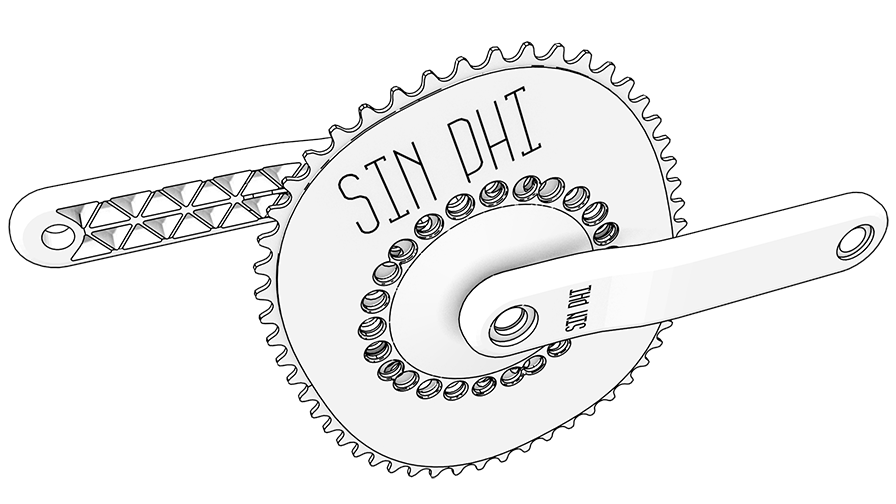
There have been quite a few grand tours won in recent years abord elliptic chainrings and numerous stages and races. You are probably asking yourself now what chainring profile is right for me? The first step is understanding how the power gets from the pedals to the tarmac. The plot on the left bellow shows the power versus crank angle of an elite endurance rider. The plot on the right is the equvilent tooth count of an elliptic chainring compared to a 53 tooth round ring. This shows clearly how an elliptic chanring gives a higher gear ratio in the power phase and allows the rider to recover quickly through the dead zones.
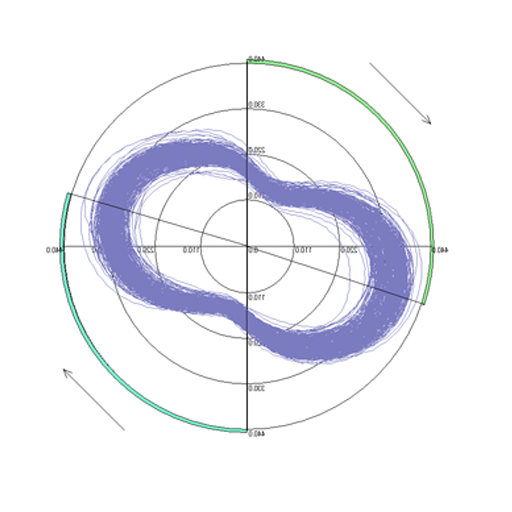 |
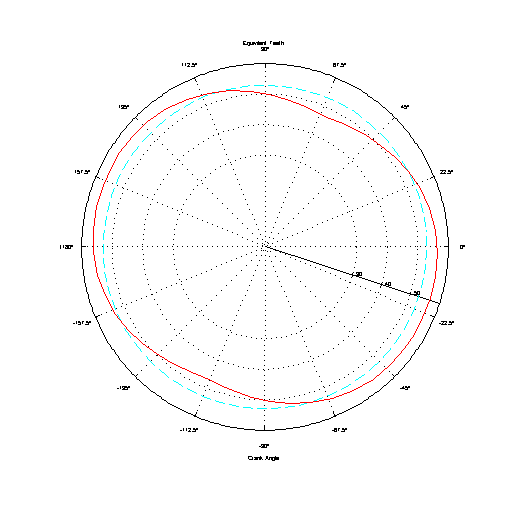 |
These figures do not tell the whole story however. From these It might be easy to conclude that you want a chainring shape that will give you the largest gear ratio where you produce the most power and the lowest to speed through the dead spots. The authors at http://www.noncircularchainring.be/ have extensivly analyzed how a neuromuscular model is effected by elliptic chain rings. What they show is that rather un-intutivly the optimal crank/chairing orientation does not match the power curves. Instead what must be considered is efficiency, how much power the legs are using versus how much is output. This leads to an optimum angle of between 110 and 120 degrees from the pedal around to the major axis. Most elliptic chairings have an angle of about 72 to 78 degrees. Luckily with Sin Phi you can have both and decide for yourself what works for you; speeding through the dead spot, extended power phase or reduced joint stress.
Another aspect to be aware of is the ovality of the chainring. Some early elliptic chainrings had 10% or less ovality, there will be essentially no benefit and only the difficulty in front shifting setup. Research shows that at least 15% ovality is desirable with a preference for as much as 20% or more. Much higher than 20% and there can be a drastic reduction in shifting performance. So if you are going to go through setting up an elliptic chainring you might as well go big and see the real benefits.
We provide several ways to visualize how power will be delivered with your custom chainrings. On each page in our shop and on the chainring customizer you will see a polar plot and a line graph like those pictured bellow. They are each plots of the equivilent gear tooth count versus crank angle. This helps to tune the chain ring with any set of possible goals like fast drop in gearing after power phase, slow build to power or very extended power phase.
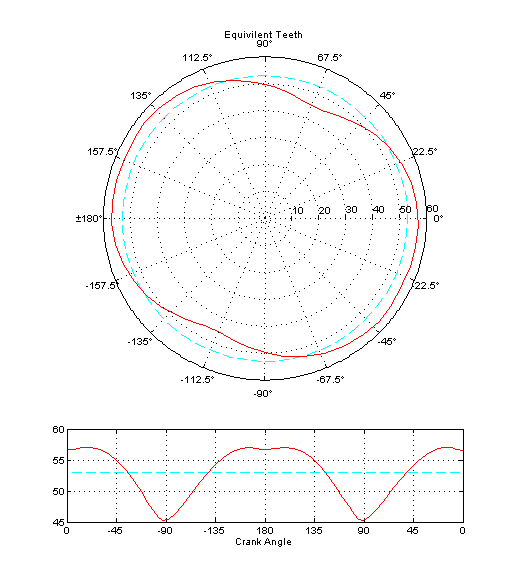 |
The MATLAB code is presented bellow as is. There are functions not included like those to export to CAD files. This should run in MATLAB 2012a and later. A sample output is included at the end.
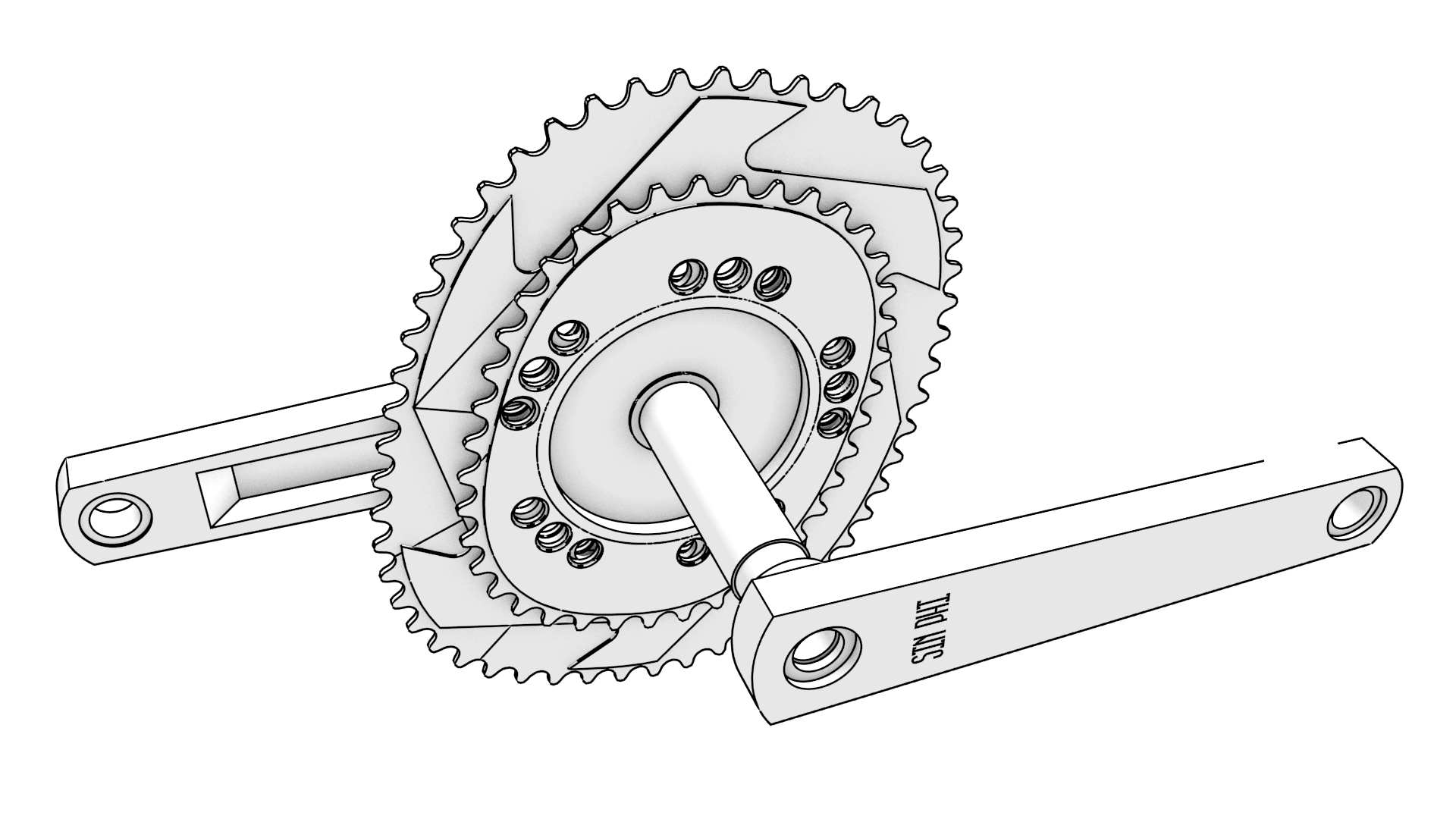
words